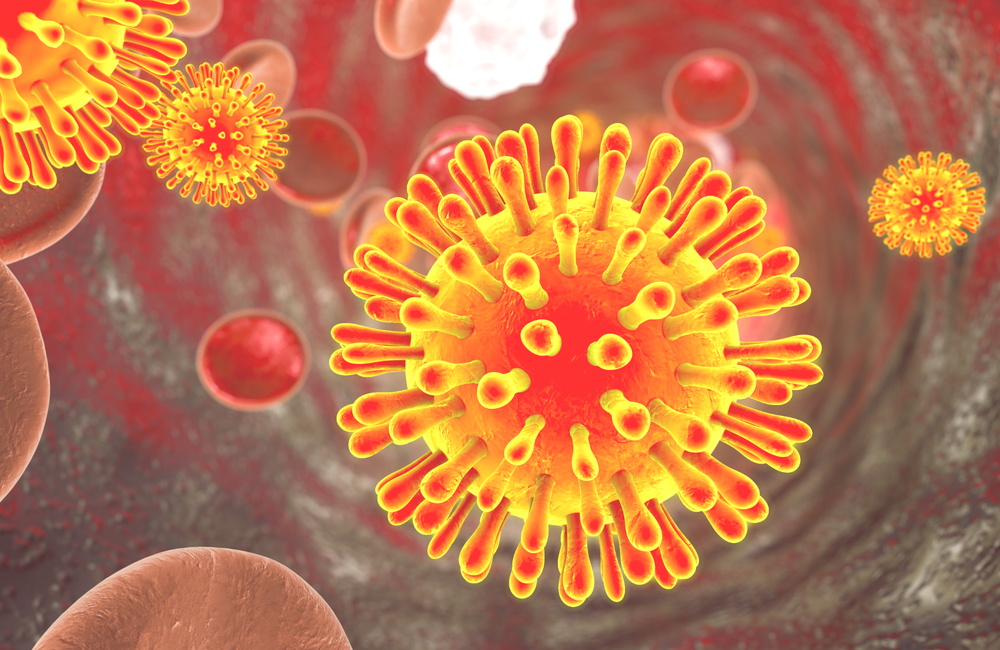
A study published in Nature on Wednesday has used novel gene-sequencing probes to investigate exactly how the one in 200 people with HIV who are so-called 'elite controllers' manage the feat.
The study is by Chenyang Jiang and colleagues from the Ragon Institute, a research consortium dedicated to finding vaccines and cures for HIV and other infectious diseases. It suggests that a dynamic process happens whereby a strong anti-HIV response by the CD8 cells of the immune system preferentially kills off cells that are more likely to produce active HIV.
The low-level stimulus from the cells that are left – and which contain HIV genes that are much less likely to spring into action – is nonetheless enough to keep the anti-HIV CD8 response attuned to HIV.
In one individual among the 64 elite controllers studied, the investigators were unable to find any replication-competent HIV genetic material in over a billion T-cells, and were also unable to grow any HIV from her T-cells. Although the investigators say cautiously that “the logic of scientific discovery does not allow us to confirm that [this patient] has achieved a sterilising cure of HIV infection through natural immune-mediated mechanisms, it is notable that we have failed to falsify this hypothesis”. In other words, this patient, who has been identified by the New York Times as Loreen Willenberg, a 66-year-old Californian who was profiled as an elite controller last year, has managed to clear all intact viral material from her system in what could truly be called a self-cure.
Dr Xu Yu, the paper's senior author, told the New York Times that since it was written they have found a couple more people that could qualify as cures. And the team is now contacting people who have been on stable antiretroviral therapy (ART) for more than 20 years to find out if they too, have managed to exile their virus to a genetic version of Siberia.
Elite controllers are people who maintain low or undetectable viral loads for many years without needing to take ART and make up less than 0.5% of the HIV-positive population. Previous studies have suggested that a lucky combination of several different characteristics – including defective HIV, a hypervigilant and specific immune response to HIV, and cells that are unusually resistant to infection may all have a part to play.
Elite controllers, as indicated above, may not be unique – there may also be a larger population of people on long-term ART who would qualify as 'post-treatment controllers' – but the only way to find out would be to take them off treatment.
Gene deserts
What the new study adds is, firstly, that elite controllers not only have less HIV genetic material integrated into their own DNA, but that it is unusually located within it. HIV carries its own transcription factors with it such as the tat protein, but it also needs to be integrated into lengths of human DNA that contain genes themselves, because it depends on the ‘switching on’ of other genes, often in response to infection or damage, to stimulate viral transcription. In other words, HIV needs fertile genetic soil in which to grow.
The researchers found that in elite controllers, HIV genes are more often found in what they call 'gene deserts' – barren areas of chromatin, the DNA-plus-protein complex that actually makes up the nuclear 'stuff' inside the nuclei of cells, and which it packages into 23 pairs of chromosomes during the process of cell division.
"Up to 60% of the elite controllers’ HIV genetic material was found in these areas even though they may contain as few as 0.12% of the 'integration sites' where HIV is physically able to plant its genes."
These gene deserts occur in places where chromatin takes a densely packed form which 'blocks and locks' genetic activity. Locations typical of this include the centromere, the knot of protein that 'ties together' pairs of chromosomes during division, and zinc fingers, areas where DNA is bound to charged atoms of the element zinc that bind it into a stable form. In addition, the HIV genes were generally further away from sites of genetic activity.
The investigators suggest that this is not an accident. Elite controllers are not people whose HIV has fallen on stony nuclear ground by chance; nor do they have DNA that 'attracts' HIV genes to these barren areas, perhaps by allowing easier integration there.
It is rather that the DNA picture we see is the archaeological evidence of a battle that HIV usually wins against the immune system but which, in elite controllers, the immune system has won: HIV has been nipped out of all the sites where it landed in fertile ground by the killing of cells that contain these areas, leaving only cells containing inactive viral DNA.
Evidence for this is found in the fact that up to 60% of the elite controllers’ HIV genetic material was found in these areas even though they may contain as few as 0.12% of the 'integration sites' where HIV is physically able to plant its genes.
Characterising elite controllers
The study compared 64 elite controllers with 41 chronically infected people on ART. They had the same average age (56) and the same proportion were women (about 20%). They had also been infected for the same length of time on average (17 years) and, interestingly, had been virally undetectable for the same length of time (9 years) – this is a reminder that elite controllers don’t always maintain total viral undetectability but may instead maintain low but detectable viral loads off therapy for part of the time.
The elite controllers had somewhat higher CD4 counts than those on ART (908 versus 726), and more of them (27% versus 9%) had one of two subtypes of the HLA set of genes that recognise foreign material and pathogens. One of these subtypes, HLA-B*57, causes allergy to the HIV drug abacavir, but people with it and another subtype, HLA-B*27, tend to maintain lower HIV viral loads off treatment.
The people on ART had roughly 20 times as many T-cells containing proviral HIV DNA as the elite controllers. However, a lot of the integrated proviral HIV DNA is junk – it’s just degraded HIV sequences that would not be able to issue the instructions for making new viruses.
The elite controllers (with one exception) had a higher proportion of proviral DNA that was intact – it could make new viruses and did so if cultivated in a lab dish. About 17% of the proviral DNA in elite controllers was intact compared with 8% in people on ART, even though they had less proviral DNA overall. Indeed in two elite controllers, 100% of the proviral DNA they had was replication-competent.
"The investigators failed to find a single piece of replication-competent proviral HIV DNA in 1.5 billion of Loreen Willenberg's T-lymphocytes."
This may sound bad, but if the proviral DNA is in locations within the genome where it cannot activate, then this does not mean HIV replication is likely in the future. In addition, it is evidence that the proviral DNA seen in elite controllers is reproduced purely clonally, which means it is purely due to DNA copying itself when cells divide. This reproduces the HIV material faithfully. If proviral DNA within cells is instead being ‘reseeded’ by new waves of active viral replication, then this is a more error-prone process and one would expect more mutations.
The exception mentioned above was Loreen Willenberg. The investigators failed to find a single piece of replication-competent proviral HIV DNA in 1.5 billion of her T-lymphocytes and also failed to cultivate any HIV from 340 million of her CD4 cells in what is called a viral outgrowth assay. What they did find was 19 proviral sequences of HIV that were incapable of replication – proof that she had indeed had HIV (she has also had a single detectable viral load of 93 copies/ml in 36 viral load tests over 24 years).
They also found another patient with a similar viral load history (one detectable viral load of 56 copies/ml in 12 years) in whom they at first failed to find any HIV but eventually found one cell in 1.02 billion that had a single sequence of replication-competent proviral DNA in it.
Could this help develop an immune therapy?
This is all very well, but what implication does it have for the rest of us? The investigators reference in passing a study, by the same team, of three HIV patients last year on long-term ART. By using similar DNA-locating tools, they found that the same processes – a gradual pruning of HIV in sites favouring replication, so that intact proviral DNA becomes, over time, more likely to be located in parts of the genome that don’t activate – are found in people on long-term ART, if to a lesser degree.
In a commentary on the study, HIV cure expert Nicolas Chomont from Montréal University in Canada says that this shows that “such selection, over years, could result in a reservoir [of HIV-containing quiescent immune cells] made entirely of proviruses that are unlikely to be reactivated.” The only reason we didn’t realise this was happening before was that we lacked the sophisticated assays that show that not all intact HIV proviral DNA is capable of giving rise to new viruses.
This might be a long-term process in people on ART. But it does hold out the possibility, Chomont comments, that immune therapies including novel ones like CAR T-cells – genetically altered T-cells that have been induced to be ‘hyper-aware’ of HIV and mount an intensified response to it – could help this process on its way, so that perhaps more of us can become viral controllers.
Jiang C-Y et al. Distinct viral reservoirs in individuals with spontaneous control of HIV-1. Nature, early online publication, 26 August 2020. http://www.doi.org/10.1038/s41586-020-2651-8 .
Chomont N. HIV enters deep sleep in people who naturally control the virus. Nature, 26 August 2020. http://www.doi.org/10.1038/d41586-020-02438-7.

